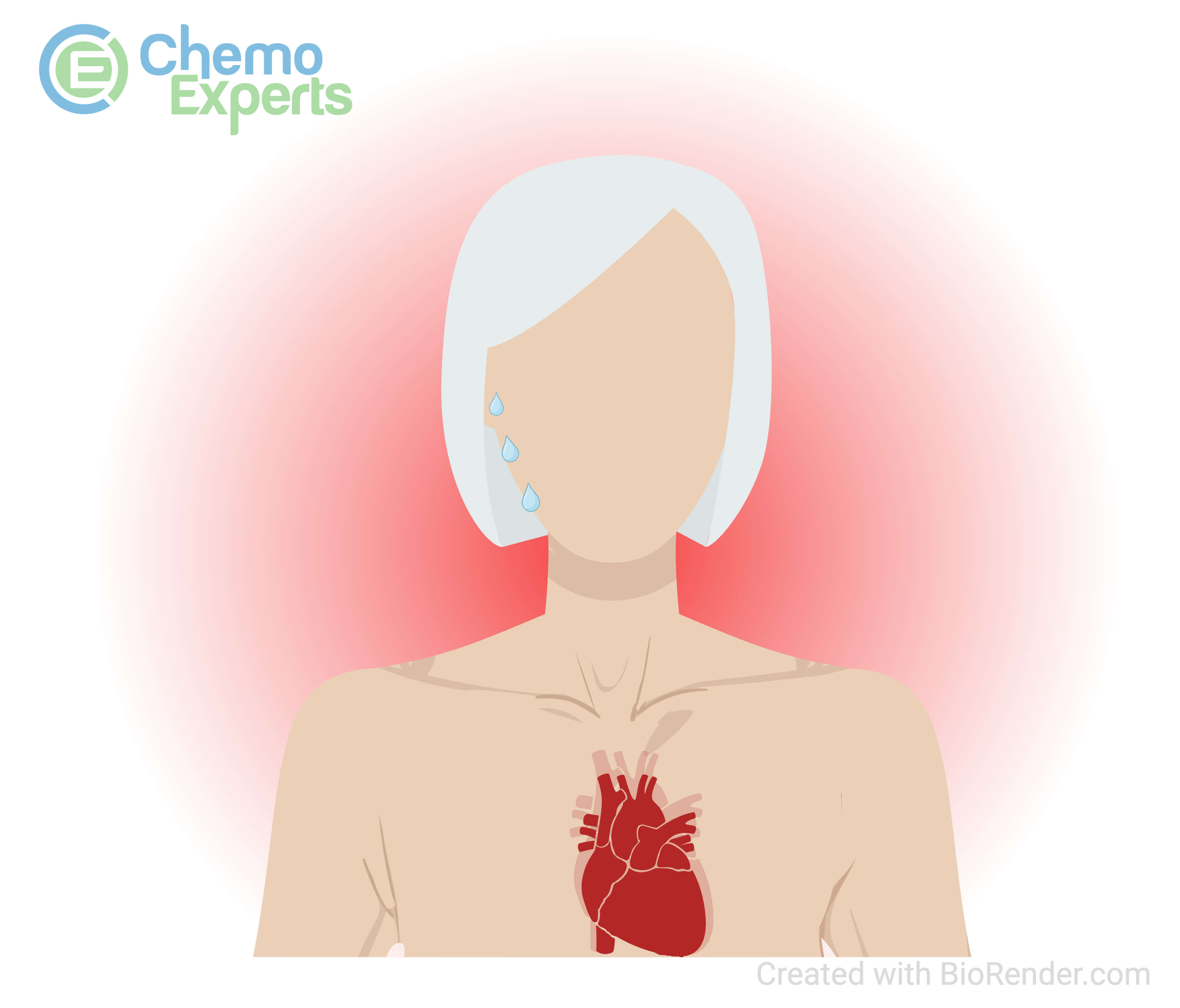Side Effect: Hot Flashes
What are Hot Flashes?
Hot flashes, also known as vasomotor symptoms, are a common symptom experienced by many women during menopause but can also be a common symptom experienced by both men and women with certain types of cancer receiving certain types of treatment.
For example, patients undergoing hormonal therapy or treatments that affect the reproductive system can experience a decrease in estrogen levels which are thought to play a role in the development of hot flashes.
During a hot flash, the hypothalamus mistakenly senses that the body is too warm and responds by dilating blood vessels to increase blood flow to the skin, causing the sensation of warmth and flushing. This is followed by sweating, which helps to cool the body down.
What do Hot Flashes look like?
Hot flashes are characterized by a sudden feeling of warmth that spreads throughout the body, often starting at the head and neck, followed by sweating, flushing, and a rapid heartbeat. They can occur during the day or night, interrupting sleep and cause discomfort. They can last for several minutes and can be uncomfortable.
Hot Flashes

Click to enlarge
Hot flashes may cause a feeling of warmth thoughout the body, sweating, and a fast heart rate
Who gets Hot Flashes?
Patients with breast cancer, prostate cancer, and other cancers that affect the reproductive system are at increased risk for developing hot flashes, especially if they are undergoing anti-hormonal therapy. In addition, patients undergoing chemotherapy or radiation therapy may also experience hot flashes as a side effect.
How do you prevent Hot Flashes?
Preventing hot flashes in patients with cancer can be challenging, but some strategies that may help include avoiding triggers such as:
- hot and spicy foods
- caffeine
- alcohol
Lifestyle modifications such as regular exercise and stress reduction techniques may also be beneficial.
Hormonal therapies, such as estrogen replacement therapy, are effective in preventing hot flashes, but may not be appropriate for all patients as sometimes they counteract the effects of cancer treatment. Therefore, the use of these medications should be discussed with a healthcare provider before purchasing and before using.
How do you treat Hot Flashes?
In patients with cancer, the treatment of hot flashes may depend on the underlying cause. For example, in patients receiving hormone therapy, reducing the dose or switching to a different medication may help to alleviate hot flashes.
Non-pharmacologic (non-drug) approaches, such as acupuncture and cognitive behavioral therapy, may also be effective in reducing the frequency and severity of hot flashes.
In some cases, medications may be prescribed to manage hot flashes. Commonly used medications to help treat hot flashes include:
- venlafaxine (Effexor®)
- citalopram (Celexa®)
- gabapentin (Neurontin®)
- oxybutynin (Ditropan®)
- clonidine (Catapres®)
Importantly, these medications may have undesirable side effects so the benefits of treating hot flashes must be weighed with the risks of adding a new medication that may have side effects itself.
While there are different approaches to managing hot flashes in patients with cancer, some interventions may not be suitable for everyone. Here are some things that some patients should avoid when treating hot flashes until they can discuss the risks and benefits with their doctor:
- Hormone replacement therapy (HRT): While HRT is a well-established treatment for hot flashes in postmenopausal women, it is generally not recommended for women with a history of breast cancer due to the risk of cancer recurrence.
- Soy supplements: Soy supplements contain compounds called phytoestrogens, which can mimic the effects of estrogen in the body. However, some studies have suggested that high intake of soy supplements may be associated with an increased risk of breast cancer recurrence in women with a history of the disease.
- Black cohosh: Black cohosh is an herbal supplement that is sometimes used to relieve hot flashes. However, there is limited evidence to support its effectiveness, and some studies have suggested that it may have estrogenic effects that could be harmful for patients with breast cancer.
Created: March 26, 2024
Updated: March 26, 2024

